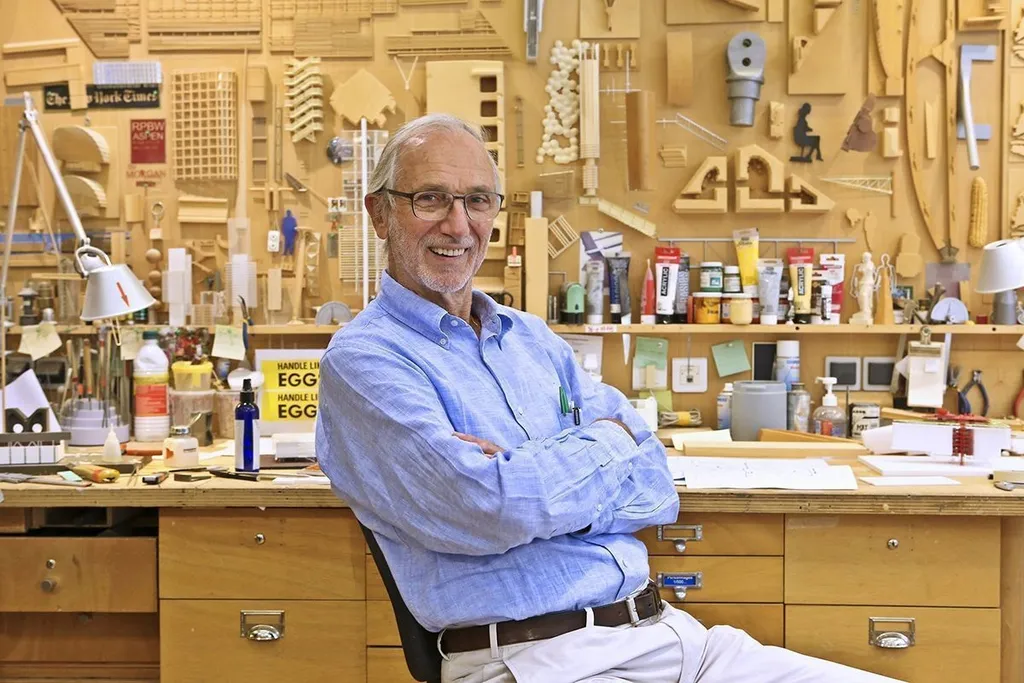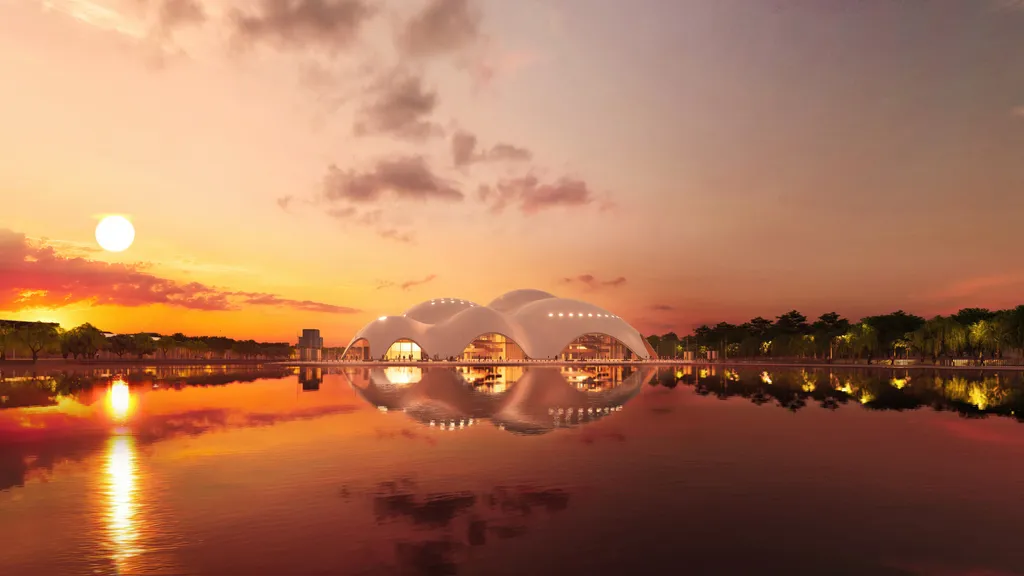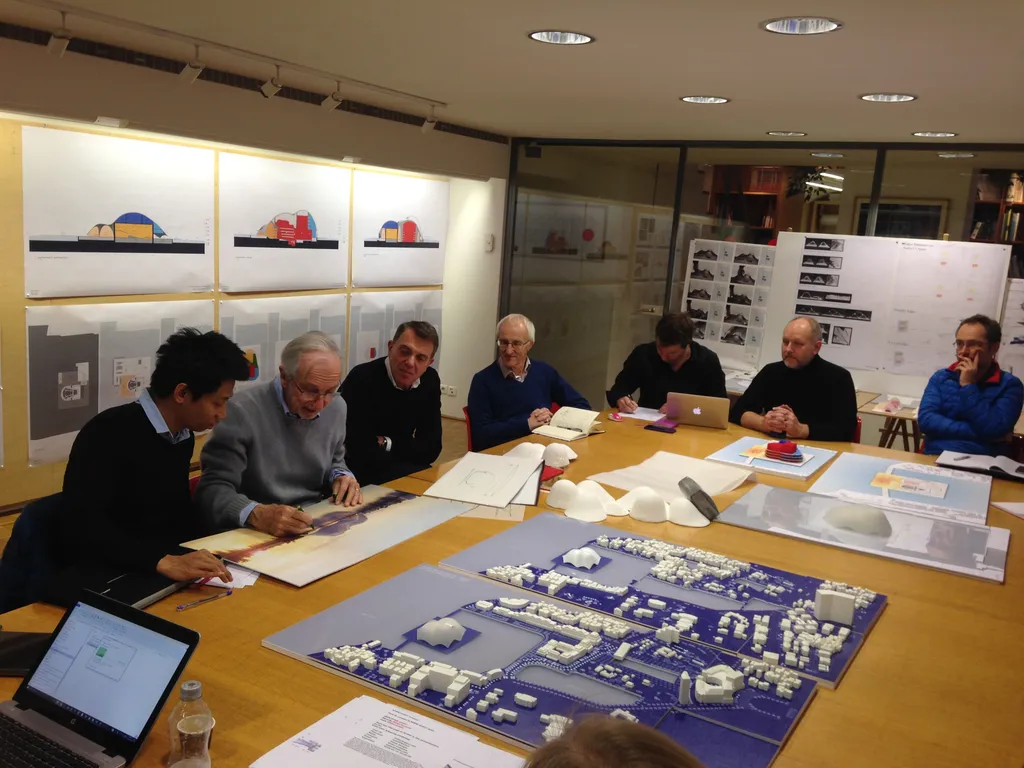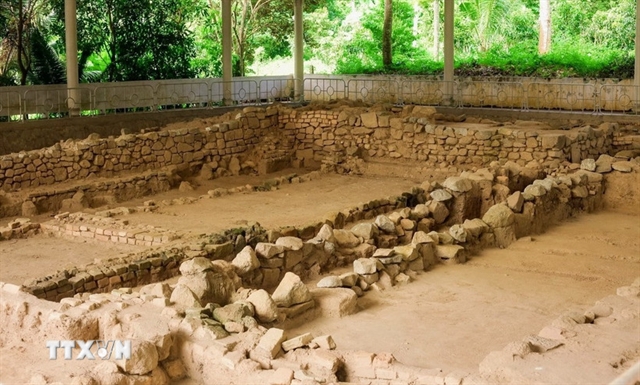 Brandinfo
Brandinfo

An architectural legend and his love for Hanoi
Designed by the legend Renzo Piano, Hanoi Opera House is expected to become an iconic project of Vietnam, listed among the world's most famous opera houses. Few know that, despite being renowned for numerous architectural works across the globe, Renzo Piano holds a special affection for the Hanoi Opera House.
Unable to be present at the project's Groundbreaking Ceremony in Hanoi on October 5, Renzo Piano sent a special message for his devoted project:
He said: "I’m not with you (today). I’m with you in spirit. I wish the best for today. I love this project. This is probably the most loved project in my mind. This is about music. And I’m passionate about music. Music is my passion. But it’s also an island. And islands are always magic. And in the middle of water and water makes things beautiful. So, there’s so many things that are good. And I’m so happy to create that building, which will be there for centuries. People coming, enjoying music and staying together. All my best to everybody. Thank you!”
Driven by his deep feelings for human culture, Renzo Piano’s design philosophy ensures that his architectural works consistently pay tribute to the historical and cultural heart of the site.
At over 80 years of age, Renzo Piano holds a special love for the cultural aspects and historical significance of Hanoi, a thousand-year-old city of civilisation. He pours his lifelong career passion, energy, and essence of his career into the project he considers his most beloved work.
 |
| Renzo Piano has received many prestigious awards throughout his 60-year career, such as the Pritzker Prize, considered the Nobel Prize of architecture. |
Having spent 40-years researching thin-shell structure technology – a complex and intricate field - the architectural legend wishes to apply this cutting-edge technology for the first time to the dome of the Hanoi Opera House. In a form reminiscent of pearls rising from the surface of West Lake, the opera house's dome appears soft and poetic yet distinctly contemporary.
The dome with its pearlescent effect, honours the simple, original and pure beauty of nature. West Lake is associated with moments that have entered poetry and the hearts of Hanoians, and the pearl will reflect that movement of time on the dome. The Hanoi Opera House will thus tell the story of West Lake, with its magical moments: tinged with purple, misty and vague, and reflecting the brilliant orange light of the sun at times.
With the Hanoi Opera House, the legend Renzo Piano will revive a civilised Hanoi, not only with cultural values that have endured through time but also with an advanced culture, approaching the elite values of the world.
 |
| With its pearlescent effect, the Hanoi Opera House reflects the diverse hues of the sky, beautifully magnificent in the sunset light. |
A great talent, a great character
In a 2018 interview with architect Renzo Piano, CNN described him as a "charming" Italian. That charm emanates from his warmth, approachability, and notably, he is not one for ostentation or praise. That is the essence of Renzo Piano, working quietly, contributing to humanity with works that can 'change the world'. For his tireless contributions, he is incessantly mentioned by the architectural community and international media as a 'star' of modern architecture.
Born in 1937 in Genoa, Italy, Renzo Piano is known as one of the most influential architects of the 20th century. From a young age, he and his partner, Richard Rogers, excelled by surpassing over 600 competitors worldwide, including many famous architects, to win the right to design the Centre Georges Pompidou - the pet project of former French President Georges Pompidou, a cultural heart in ancient Paris. Later, he contributed many lifetime works such as The Shard in London; the skyscraper headquarters of The New York Times; and the Parco della Musica Auditorium in Italy...
 |
| Architect Renzo Piano devotes all his passion to the Hanoi Opera House project. |
Renzo Piano is not merely a talented architect. Contemporary generations of architects revere him for his design philosophies that always honour cultural, historical values and contribute to humanity. One of the most memorable images of him is his engrossed expression while presenting: "You are not simply a builder, but also a citizen, therefore you need to create shelters for people, for the human community" or "One of the wonderful beauties of architecture is that at the moment of its birth, it seems to start a new life."
The British newspaper, The Financial Times, called Renzo Piano a tireless intellect; even now, in his 80s, behind those blue eyes remains a longing for humanity. In all his works, he expresses his strong connection to nature, culture, and people. The architectural legend once designed a children's hospital in Uganda, using red clay, wood, gravel... The New York Times once called the Kansai Airport, one of his works, "the most spectacular building erected, an impressive engineering work," because the airport has a light, thin structure to cope with the risk of earthquakes.
Even in his homeland of Italy, he was called "a hero" for establishing the group of young architects G124, paying them to build projects aimed at restoring the country's suburbs. Or another time, driven by emotion after the Morandi Bridge collapse, he gifted his hometown with the design for a new bridge spanning the Polcevera River and spent a whole year directly supervising its construction.
Through his contributions, the legend Renzo Piano was the first Italian to be featured in TIME magazine's Top 100 Most Influential People in the World in 2006. Furthermore, he has received many prestigious awards throughout his 60-year career, including the Pritzker Prize, regarded as the Nobel Prize of architecture. Architect Renzo Piano has truly become a monument admired and respected by the global architectural community.




